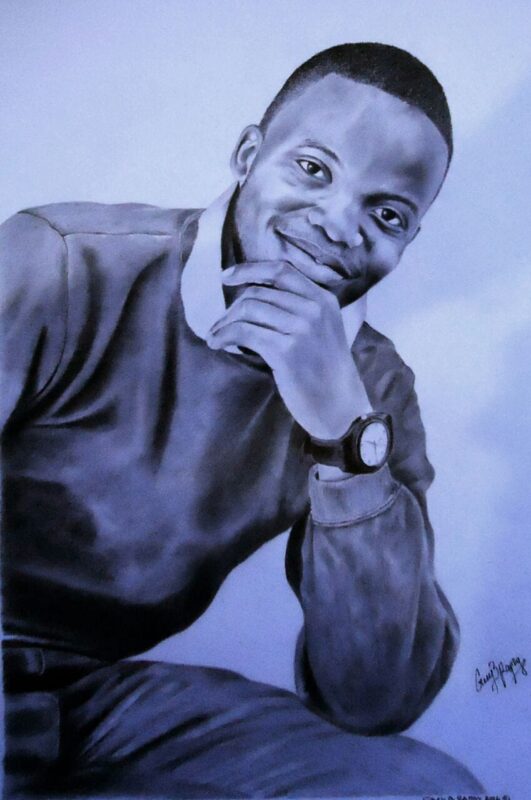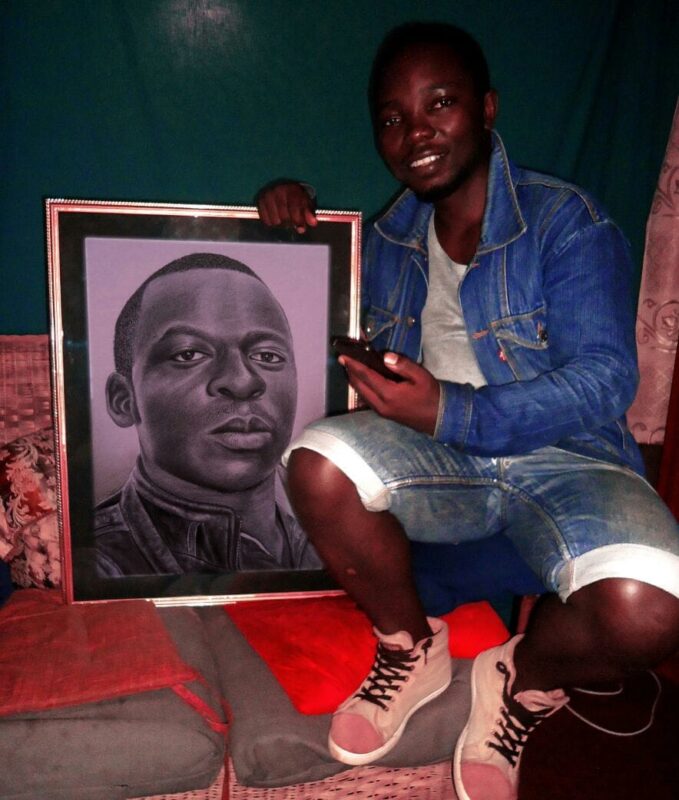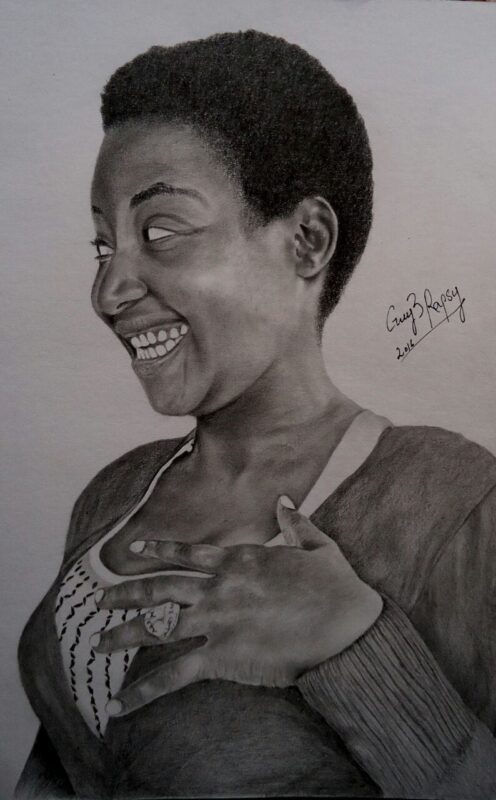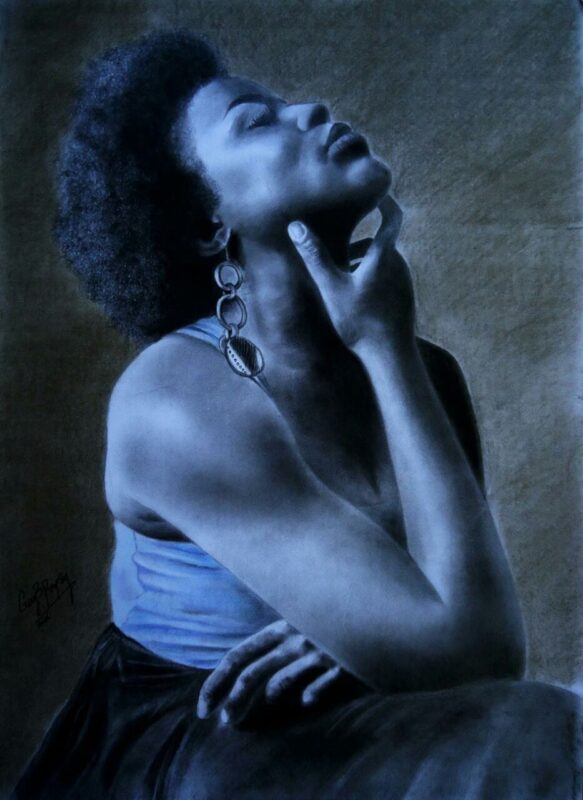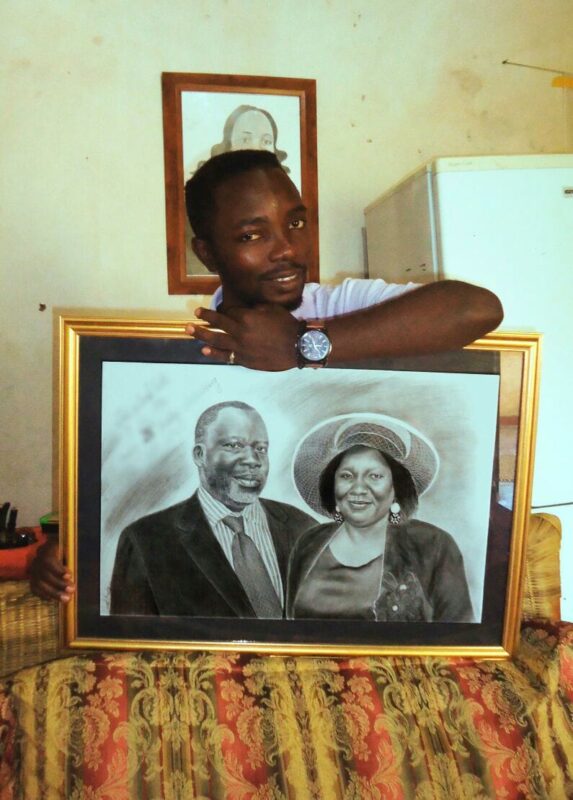In a world where digital technology has taken over as almost everything has gone digital, Malawian-born fine artist Guy B. Rapsy still survives through a pencil, and he has denied the temptation of using digital technology in his art business.
Guy B, Rapsy, nicknamed ‘the Pencil assassin,’ is a commercial fine artist based in Chimwankhunda in Malawi’s Commercial City of Blantyre. He mostly does pencil drawings, though sometimes he does paintings.
“I do fine arts, most especially drawing and paintings; I do more of pencil drawings like portraits, abstracts, cartoons and illustrations about real life situations. In addition to that I also do paper art, wall paintings, batiks and graffiti,” Rapsy says.
Rapsy’s artwork dates back to the years when he was in primary school where he had a knack for drawing pictures instead of writing school lessons in his notebooks.
He says, “I can’t really remember how I started drawing but it all goes back to my primary school days when my father would give me a notebook to write lessons at school but all I could do was draw pictures of movie stars and cartoons. When I went to secondary school I was much [more] into drawing cartoons than portraits that I am doing today. And now here I am doing portraiture and other arts.”
The life of other artists has played a part in Rapsy being where he is today as it has helped keep him focused.
“I am inspired by the life of other artist that I come across everyday especially those who have made it in life through art,” Rapsy says. “The artworks that these people do keeps me focused and inspired that whatever I am also doing as an artist is on point and I can do so much more just like others.”
A pencil is a primary tool that Rapsy uses in his art work, and he has denied the temptation of using digital technology despite the world currently being dominated by digital technology.
When asked how he has managed to hold onto the pencil when he could make his life easier by using digital technology, Rapsy said clinging to the pencil makes his art work more valuable.
“It is true we are in a digital era and everything has gone digital to the point that even drawings are done digitally but as for me I still use actual materials to come up with my artwork. The value of my artworks is higher than those done digitally. There is competition of course, but I stand out as I have my own target audience for my artworks and those digitally done cannot even match,” he says.
He added, “I am a self-taught artist. As such, along my journey I have come up with my own techniques of doing my artworks different from others and that’s what makes me unique. My artworks are usually a presentation of reality on the ground and I am diverse as well.”
Despite already establishing himself as a household name as a painter, Rapsy is not yet satisfied and he still holds a desire to achieve more.
He says, “In art we learn and perfect ourselves each and every day. As such it would be wrong to say that I am satisfied with the level I am now because there is a lot to still discover. However, I can proudly say it feels good to have people appreciating my art which is most important to an artist. I want to grow even bigger. I want my artworks to be recognized everywhere locally and internationally.”
Rapsy is always open to sharing knowledge with other artists and he is excited that he has inspired a lot of people to take their talents seriously, which to him is an achievement.
“I believe that art is an inborn talent and I am always open to sharing knowledge where necessary to those willing to enhance their talents but also inspiring them to become perfect. Of course I have done that and I am still going do it to help others to be on the right direction in their respective fields,” he says.
While Rapsy has managed to make his name as an artist, he is unimpressed with the support the Malawi community gives to artist and he sees that as a great challenge to the future of arts in the country.
“The biggest challenge when it comes to art in Malawi is failure to appreciate and give the value the artworks deserve. Most of the time people want me to do for them good artworks cheaply, which doesn’t work well on my side because I invest a lot of time, effort and materials to come up with nice artworks,” he says. “Support from the public comes with your persistence in the industry. Otherwise, the Malawian set up gives little attention to art. As such, an artist has to struggle so much to get a spot on. So far so good, I can say my art works are welcomed by most people who set their eyes on them because they are catchy and amazing.”
Considering the little attention Malawians give to artwork, Rapsy has one plea, and that is urging people to support artists in the industry so that they can sustain their lives through what they do.
Tags
abstracts / batiks / Blantyre / Chimwankhunda / fine arts / Guy B Rapsy / illustrations / paper art / portraits / wall paintings
abstracts / batiks / Blantyre / Chimwankhunda / fine arts / Guy B Rapsy / illustrations / paper art / portraits / wall paintings

